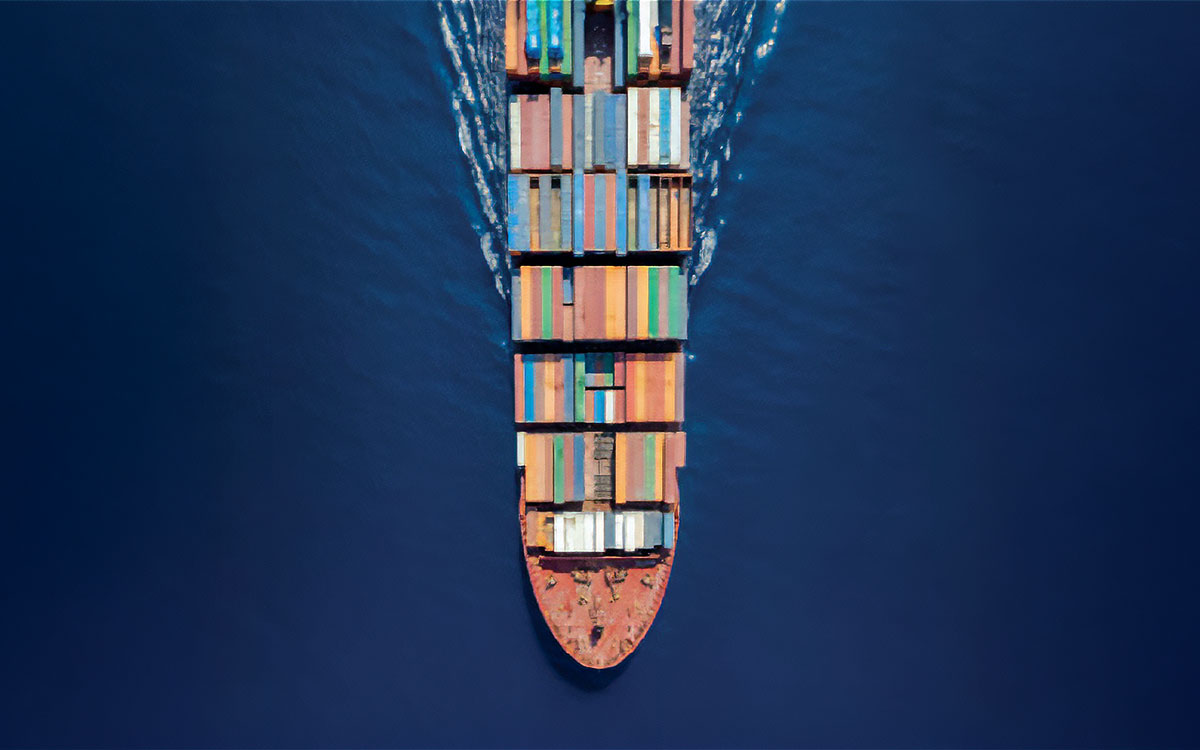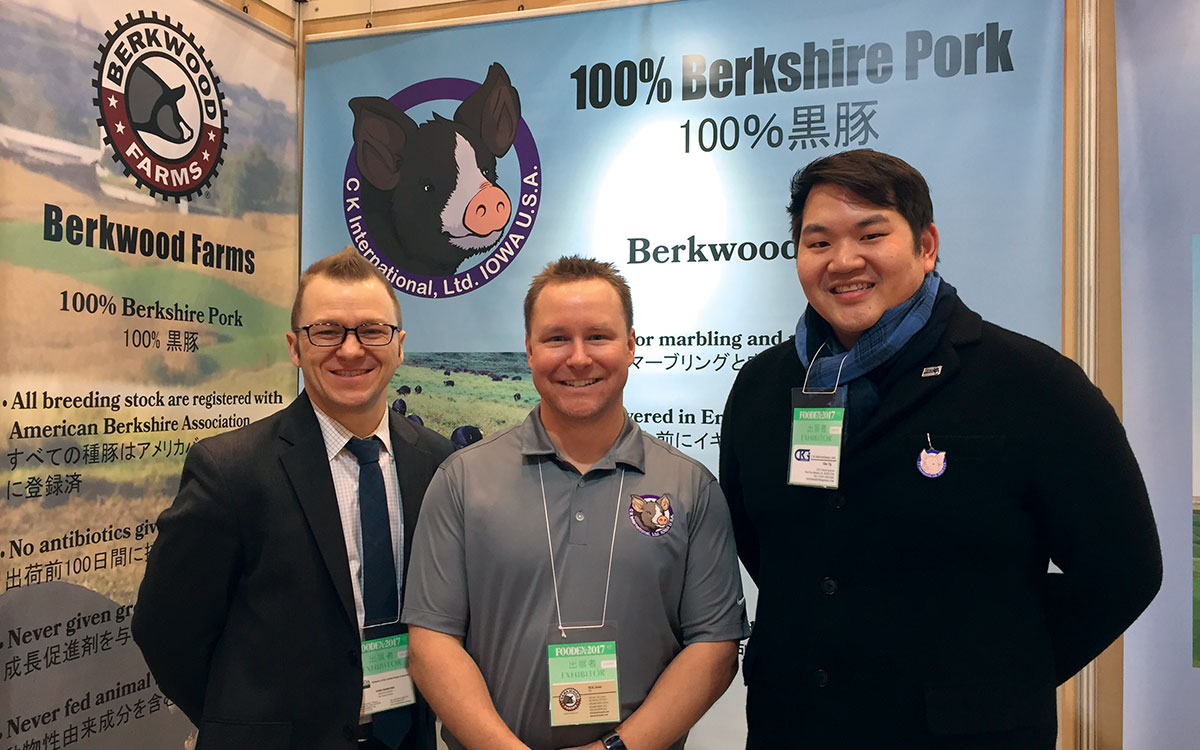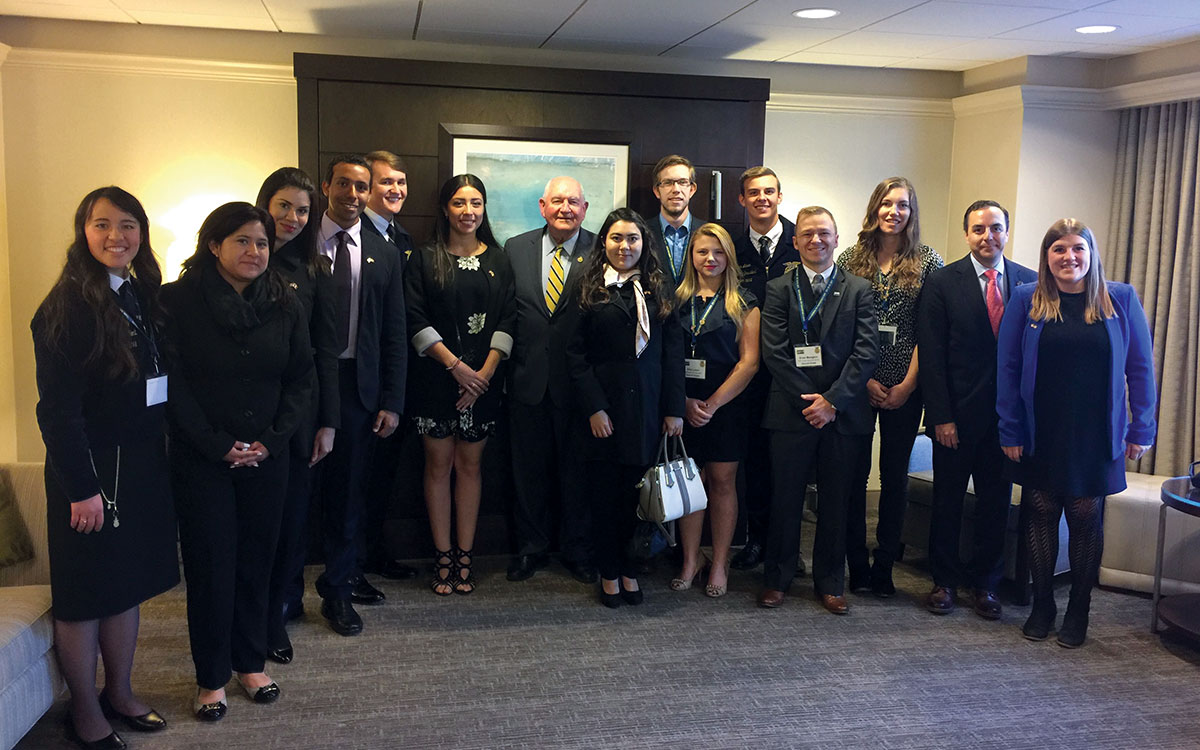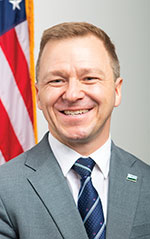FAS: Agricultural Economic Diplomacy in Action
Agricultural exports account for more than 20 percent of American farm income, and the Foreign Agricultural Service keeps them growing.
BY EVAN MANGINO

Art–iStockPhoto/Hansche
On National Agriculture Day in March, President Donald Trump described farming as “the bedrock of our economy and way of life.” And as agricultural export sales contribute more than 20 percent of U.S. farm income, exports are essential to the economic viability of more than 1.9 million American farms. So, it came as no surprise that White House Press Secretary Karoline Leavitt called out the egregious tariff rates some of our closest allies levied against U.S. agricultural exports ahead of President Trump’s April 2, 2025, tariff announcement.
Foreign markets generally apply much higher tariff rates on agricultural products than on non-agricultural products, and they generally charge much higher agricultural tariffs than the United States. When trade relations get “scratchy” between countries, agricultural products—including perishable, high-value products like fresh fruits and vegetables—are often the first point of retaliation.
Food is intrinsic to national identity and culture, which are tied to the agricultural history of a place. Agriculture is often the economic foundation for rural populations, and, as so many of our immigrant ancestors understood firsthand, food security is national security. Given those reasons, it’s no wonder many countries turn trade protectionist about agricultural imports, which render U.S. agricultural exports incredibly important and yet quite vulnerable to disruption.
As a nation, who do we call on to protect and expand American agricultural exports? To break down foreign protectionist barriers? To ensure American farms are economically sustainable for the next generation to inherit? The answer is the roughly 1,000 men and women of the Foreign Agricultural Service—including 150 Foreign Service officers working in U.S. embassies and consulates around the world—who make the world safe for U.S. agricultural exports every day.

The author (left) with Iowa pork exporters at the FOODEX trade show in Tokyo, 2017. Japan was the United States’ number one pork export market by value in 2017.
Courtesy of Evan Mangino
Barriers to Trade

An importer with industrial bales of U.S. cotton at a Korean-owned cotton yarn spinning facility in Costa Rica, 2023. The author’s work to reduce inspection rates for U.S. cotton shipments into Costa Rica made U.S. cotton shipments more profitable.
Courtesy of Evan Mangino
American agricultural exports are the lifeblood of the Foreign Agricultural Service. FAS employees get up every day to keep U.S. agricultural products flowing into foreign markets. And we play what feels like a never-ending game of whack-a-mole, knocking down barriers to U.S. exports in one market only to have more barriers pop up in other markets. Trade policy is generally considered complex, but modern agricultural trade policy would shame Byzantium.
On top of basic tariffs, tariff-related measures like tariff-rate quotas and special safeguard measures can trigger market-halting tariffs if exports exceed a certain volume or value threshold. Foreign markets also layer on so-called technical barriers to trade, like restrictions on container sizes or labeling requirements.
And on top of those, trade partners apply sanitary (animal) and phytosanitary (plant) barriers to trade, some of which are scientifically reasonable (e.g., no importing pork from a country with African swine fever) and some of which are just gross protectionism in disguise (e.g., setting a “zero tolerance” for Salmonella in raw pork, when no one eats raw pork).
With all these overlapping layers of foreign market protectionism, it is both a wonder and a testament to FAS diplomatic skill that U.S. agricultural exports reached $176 billion in 2024.
Market Access and More
FAS Foreign Service officers are diplomats by profession and often economists by training, but some agricultural trade barriers are so absurd they can test the limits of our composure. Take, for example, the Canadian supply management system. This Canadian social contract severely limits imports of U.S. dairy, egg, chicken, and turkey products in order to guarantee profit margins for a tiny number of Canadian producers, while leaving the rest of the Canadian agricultural sector subject to the vicissitudes of competitive markets. But this is not the only “philosophical” trade barrier we deal with overseas.
FAS also wages something akin to a crusade on behalf of U.S. food and agricultural products derived from advanced breeding techniques. A number of our trade partners use consumers’ inchoate fears and misunderstanding of emerging agricultural technologies to justify protectionist trade barriers on genetically engineered or gene-edited products. FAS champions innovation and peer-reviewed scientific research to make sure U.S. producers have technological tools available to adapt to changing conditions, to increase production, and to promote soil health. And we regularly engage our trading partners to ensure that science—not philosophy—is the basis for market access decisions.
While market access may be the proverbial bread and butter of FAS, it’s not our only contribution to U.S. agricultural export success. Not by half. Do you have any idea how many 40-ft. containers and bulk-freight ocean liners it took to move $176 billion of agricultural exports in 2024? The following example using delicious, U.S. grain-finished beef might help paint a picture.
FAS employees get up every day to keep U.S. agricultural products flowing into foreign markets.
In 2024 we exported about 1.3 million metric tons of beef and beef products worth $10.5 billion. If a 40-ft. refrigerated container holds about 25 metric tons, then we shipped more than 50,000 containers of beef overseas. And if each container holds 20 pallets, and if each pallet held 50 boxes of beef, then that means we shipped more than 50 million boxes of beef. That’s just beef! Each of those boxes had a sticker tying that shipment of U.S. beef to the specific U.S. Department of Agriculture (USDA) export certificate for that shipment. But with that many boxes of beef being exported and inspected upon arrival in foreign markets, it is a mathematical inevitability that mishaps with stickers, certificates, and other paperwork would occur.
When a U.S. exporter reports such a mishap, the FAS network of Foreign Service officers and 350 local staff members across 95 offices in 75 countries answers the phone. If FAS weren’t there, that beef would be sent back to the United States (with the exporter paying thousands in additional freight costs), or, even worse, it would be destroyed at the foreign port of entry.
FAS overseas staff personally know officials in the export market’s agriculture ministry. Oftentimes, FAS has brought those ministry officials to the United States to learn about the U.S. food safety system. USDA sister agencies like the Food Safety and Inspection Service may have trained those same ministry officials on risk assessment or international standards. FAS relationships with ministries of agriculture in more than 100 countries around the world lead to creative solutions to get detained shipments out of customs and into customers’ stomachs, preserving tens of millions of dollars of U.S. agricultural exports every year.

USDA Secretary Sonny Perdue (center) and the author (fourth from right) conducting North American agricultural diplomacy with young agriculturalists from the United States, Mexico, and Canada, and with Canadian and Mexican diplomats at the National FFA Convention in Indianapolis, 2017.
Courtesy of Evan Mangino
Trade Shows and Trade Missions
Food and agricultural exports are big business. In 2024 global food and agriculture trade totaled more than $2 trillion, and U.S. exporters face stiff competition for every sale, even in countries where we have obvious geographical and cultural advantages.
I don’t know what the average American envisions when they think about “agricultural trade,” but they probably think about commodities (e.g., corn, soybeans, cotton, rice) in big volumes on boats with cool size designations like Panamax or Supramax. But commodity exports represent only about half of our total agricultural export value. The other half is made up of high-value, consumer-oriented products that fill containers and come from across the country—apples from Washington state, barbecue sauce from Missouri, ground turkey meat from Minnesota, Oreo cookies from New Jersey. And key to selling these products overseas are trade shows and trade missions.
FAS “endorses” some 30 trade shows around the world every year. In foreign countries, we support U.S. exhibitors through financial partnerships with trade associations that help reimburse some of the costs associated with participating in the trade show. FAS also groups all U.S. exhibitors in one section of the trade show floor to take advantage of economies of scale for pricing and marketing—it’s easier to find U.S. products when you know all the Americans are in one place.
If you’ve never been to a food trade show, it is something to behold. Picture a couple of side-by-side airplane hangars filled with 10 ft. x 10 ft. stalls, each of which houses a food or beverage company hawking their wares, looking for new customers, and keeping up with current clients.
For a small or even a mid-sized U.S. company, selling products overseas is orders of magnitude more complicated than selling in the next state over back home.
FAS also endorses a handful of food trade shows in the U.S. every year, sometimes buying plane tickets to send foreign buyers to those shows. These buyers often would not have attended the U.S. trade show without FAS financial support, maybe staying at home or maybe accepting a more generous offer from another agricultural export competitor or the European Union (EU), which outspends the U.S. government by a wide margin in promotion of their food and beverage exports. Some studies have shown that the EU, for instance, outspends the United States by a margin of 4:1.
Whether the United States ever attempts to match competitors dollar-for-dollar in promoting agricultural exports is beside the point. What does matter is the remarkable return on FAS investment of U.S. taxpayer funds in developing agricultural export sales in foreign markets. A 2022 study estimated that return at $24 of exports for every $1 invested.
FAS also invests in agricultural trade missions (ATM) that send U.S. companies to promising markets, combining immersive education for U.S. exporters with tailored business-to-business meetings. In 2024 the FAS ATM to Vietnam generated an estimated $31 million of sales from a total FAS investment of less than $300,000. The 2024 ATM to South Korea generated an estimated $68 million of U.S. agricultural export sales with an FAS investment of $500,000—that’s a better than 13,000 percent return on investment!
In 2024 FAS offices across sub-Saharan Africa recruited 63 buyers from 13 countries for the first-ever FAS reverse trade mission (RTM) to the National Restaurant Show in Chicago, where U.S. exporters booked an estimated $21 million of sales from an FAS investment of just $450,000.
Market Intelligence Free of Charge

Dairy cows bred from American Brown Swiss cattle in front of Nicaragua’s Mount Momotombo during a U.S. Livestock Genetics Export, Inc., training and market development activity, 2023.
Courtesy of Evan Mangino
For a small or even a mid-sized U.S. company, exporting is a major undertaking, because selling products overseas is orders of magnitude more complicated than selling in the next state over back home. U.S. companies need their product (and all their packaging and marketing material) to connect with new customers across cultural, linguistic, and culinary gaps. And U.S. companies will not only have to comply with U.S. food safety rules but also demonstrate their products meet the export market’s rules. Exporting is not for the faint of heart, but thousands of U.S. food and beverage companies seek sales volume growth in foreign markets every year. And FAS on-the-ground expertise in those markets helps them succeed.
FAS overseas staff write thousands of reports every year on agricultural export market developments, which are available free of charge on the FAS GAIN platform. These reports help U.S. businesses better assess their prospects for success and understand local market structures, consumer patterns, marketing trends, labeling laws, and so much more. FAS overseas staff also build relationships with the major local importers in foreign markets. FAS makes sure those buyers come to the U.S. exhibitors’ space at a trade show. FAS staff provide translation services and facilitate business-to-business meetings that lead to U.S. export sales.
The USDA’s Foreign Agricultural Service is known as the eyes, ears, and voice of American agriculture overseas. American agricultural diplomats and their teams of dedicated local staff are on the ground, advancing American agricultural interests in every export market that matters. We’re keeping the lanes of trade open, and we’re helping U.S. companies reach their customers and their goals of greater export sales. FAS and its overseas offices are essential to the economic success of the American farmers, ranchers, producers, processors, and foresters they serve.
When sharing or linking to FSJ articles online, which we welcome and encourage, please be sure to cite the magazine (The Foreign Service Journal) and the month and year of publication. Please check the permissions page for further details.
Read More...
- “The Power of Trade in Advancing U.S. Agriculture” by Alexis M. Taylor, U.S. Department of Agriculture, August 2024
- “Fertilizer Diplomacy” by Michael Conlon, The Foreign Service Journal, September 2024
- “FAS Provides Massive Returns on Investment” by Evan Mangino, The Foreign Service Journal, April-May 2025





